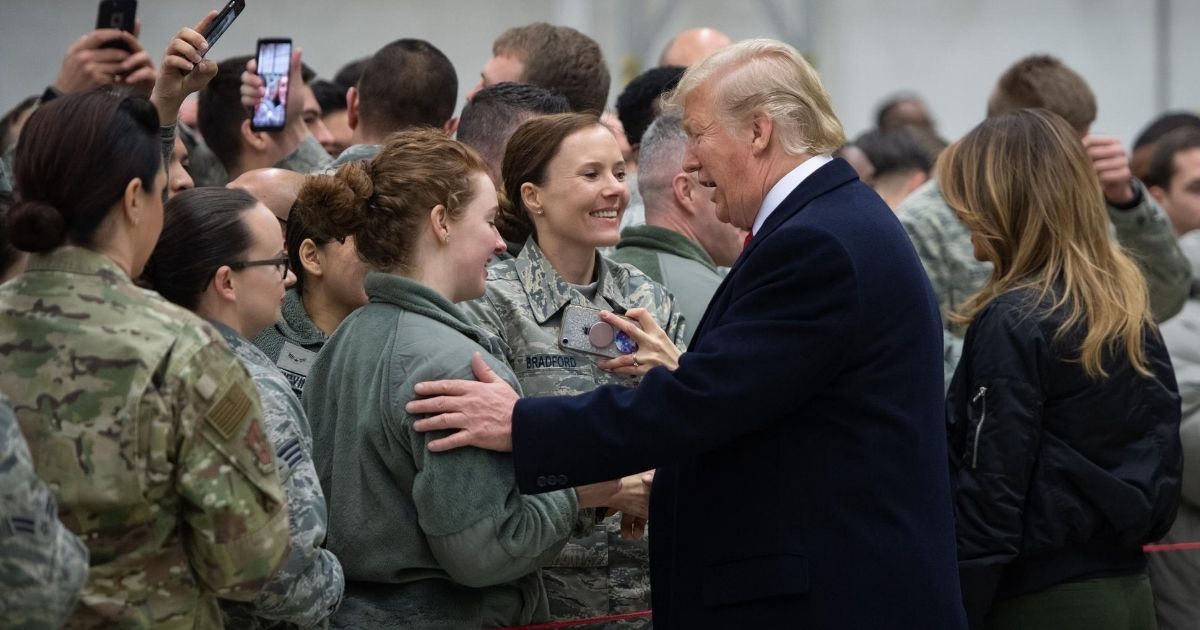
US To Bring Home Thousands of Troops Stationed Overseas at Trump's Behest
Spurred on by President Donald Trump’s demand to pull troops out of Germany, the U.S. will bring about 6,400 forces home and shift about 5,600 to other countries in Europe, U.S. defense leaders said Wednesday.
The decision fulfills Trump’s announced desire to withdraw troops from Germany, largely due to its failure to spend enough on defense. A number of forces will go to Italy, and a major move would shift U.S. European Command and Special Operations Command Europe from Stuttgart, Germany, to Belgium.
Defense Secretary Mark Esper said the moves will begin in months and will leave about 24,000 troops in Germany.
He said that while the decision was “accelerated” by Trump’s orders, the moves also promote larger strategic goals to deter Russia, reassure European allies and shift forces further east into the Black Sea and Baltic regions.
Trump, however, told reporters Wednesday morning, “We’re reducing the force because they’re not paying their bills. It’s very simple. They’re delinquent.” He added that he might rethink the decision to pull troops out of Germany “if they start paying their bills.”
The president has branded Germany “delinquent” for failing to meet a NATO goal set in 2014 for members to halt budget cuts and move toward spending at least 2 percent of gross national product on defense by 2024.
Esper said the moves will cost in the “single-digit” billions of dollars.
The announcement is closely tied to the plan to increase the U.S. troop presence in Poland, a shift long desired by Warsaw and Polish President Andrzej Duda.
Officials said the moves will require construction at bases in the U.S. to accommodate the additional forces. They said that in the future other troops would rotate in and out of Europe.
Some Republicans oppose the move. On June 20, 22 GOP members of the House Armed Services Committee signed a letter urging Trump not to reduce U.S. forces in Germany.
“We strongly believe that NATO allies, such as Germany, should do more to contribute to our joint defense efforts,” they wrote. “At the same time, we also know that the forward stationing of American troops since the end of World War II has helped to prevent another world war and, most importantly, has helped make America safer.
“In Europe, the threats posed by Russia have not lessened, and we believe that signs of a weakened U.S. commitment to NATO will encourage further Russian aggression and opportunism.”
Germany is a hub for U.S. operations in the Middle East and Africa. The decision to keep nearly half the forces in Europe is a clear move by the Pentagon to assuage allies by avoiding the complete withdrawal of 12,000 troops out of the region. And by spreading forces into the east, it sends a message to Russia that the U.S. is not reducing its commitment to the region and remains ready to protect Eastern Europe from any Moscow aggression.
Sen. Jim Inhofe of Oklahoma, the Republican chairman of the Senate Armed Services Committee, has voiced support for the plan while also acknowledging it will take “months to plan and years to execute.” Inhofe was briefed on the issue last week, and he issued a statement saying the “concept for realigning U.S. military posture in Europe” is sound.
Trump announced last month that he wanted to cut the number of active-duty U.S. troops in Germany from roughly 36,000 to fewer than 25,000. Shifting forces out of the country is in line with Pentagon efforts to put more troops in the Indo-Pacific.
At a Rose Garden event last month with Duda, Trump said some of the troops from Germany would go to Poland and some would go to “other places.”
Under an agreement announced last year, the U.S. already said it was sending about 1,000 more troops to Poland, and progress is being made, officials said, to lay the groundwork for those moves. Based on that agreement, the U.S. will add a division headquarters, a combat training center, an unmanned aircraft squadron and structure to support an Army brigade that could rotate in and out of the country.
Overall, the U.S. has about 47,000 troops and civilian personnel in Germany, spread out across a number of bases, headquarters and smaller installations.
Most of the 36,000 on active duty are in a handful of larger Army and Air Force bases including Ramstein Air Base, a hub in the region.
There also are 2,600 National Guard and Reserve forces in Germany and almost 12,000 civilians working for the services or the Defense Department.
After Trump’s meeting with Duda, Esper in early July made a rare overseas trip to NATO for a brief visit, seeking to reassure allies that Washington is still committed to the region and that he will consult with them on troops movements. Because of the coronavirus threat, international travel has been significantly limited.
Several NATO defense ministers had expressed concern about the decision to pull thousands of troops out of Germany, particularly since Trump has talked repeatedly about bringing troops home and getting the U.S. out of “endless wars.”
The Western Journal has reviewed this Associated Press story and may have altered it prior to publication to ensure that it meets our editorial standards.
Truth and Accuracy
We are committed to truth and accuracy in all of our journalism. Read our editorial standards.
Advertise with The Western Journal and reach millions of highly engaged readers, while supporting our work. Advertise Today.











